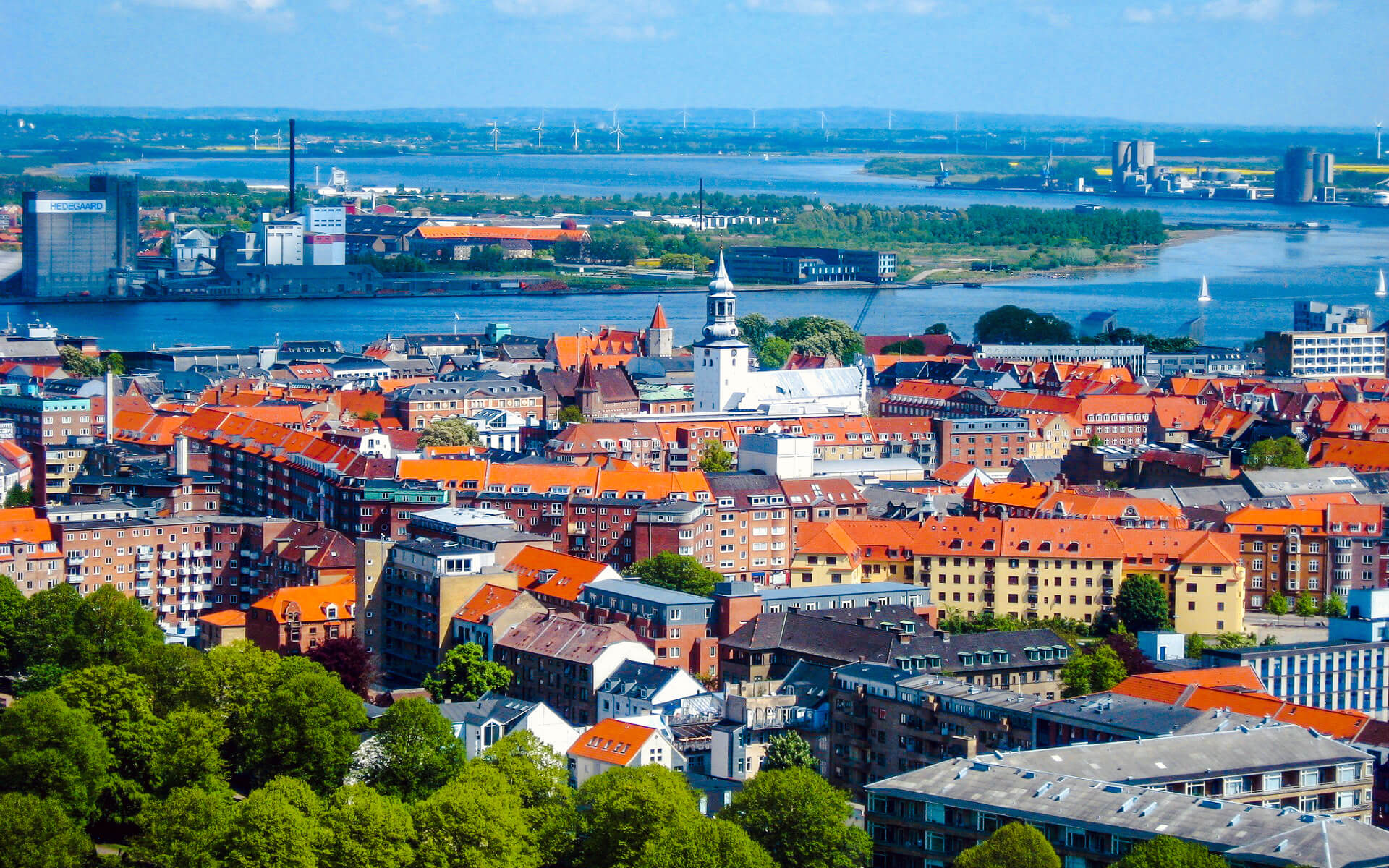Aalborg is an industrial and academic city in the Danish province of Jutland. It is the fourth most populous city in Denmark, with a population of 112,194. Aalborg is the third most populated municipality in Denmark, behind Copenhagen and Aarhus, with a population of 210,316 (as of 1 January 2016). Aalborg is 64 kilometers (40 miles) southwest of Frederikshavn and 118 kilometers (73 miles) north of Aarhus via car.
The first settlements date back to roughly AD 700. Aalborg’s location at the Limfjord’s narrowest point made it an important harbor throughout the Middle Ages, and subsequently a major industrial center. Architecturally, the city is noted for its half-timbered homes, which were erected by wealthy merchants. Budolfi Church, now a cathedral, was established at the end of the 14th century, while Aalborghus Castle, a royal house, was constructed around 1550. Aalborg is now in the process of transitioning from a working-class industrial district to a knowledge-based community. Its strong economic interests include Siemens Wind Power, Aalborg Industries, and Aalborg Portland, and it is a significant exporter of grain, cement, and spirits. These businesses have grown to become worldwide manufacturers of wind turbine rotors, marine boilers, and cement.
Aalborg is an important cultural centre, with its theatres, symphony orchestra, opera company, performance spaces, and museums such as the Aalborg Historical Museum and the Aalborg Museum of Modern Art. The Aalborg Carnival, held at the end of May, is one of Scandinavia’s major celebrations, drawing over 100,000 visitors each year. The University of Aalborg, established in 1974, is the country’s largest university, with about 17,000 students. The University College of Northern Denmark is one of seven new regional organizations, and the Royal School of Library and Information Science (RSLIS) offers library and information science higher education. Trnregimentet, Denmark’s army supply and emergency medical staff regiment, is also based in Aalborg. Aalborg University Hospital, the biggest in Jutland’s north, was established in 1881.
Aalborg BK, founded in 1885 and situated in Nordjyske Arena, won the Danish Superliga in the 1994–95 season, 1998–99 season, 2007–08 season, and 2013–14 season. Aalborg DH is a women’s handball club, Aalborg RK is a rugby club, and Aalborg Cricket Club is a cricket club. Since 1869, Aalborg Railway Station on John F. Kennedys Plads has linked the city to Randers and the south. Aalborg Airport is about 6 kilometers (3.7 miles) from the city center, and the E45, a European highway between Karesuando, Sweden, and Gela, Italy, passes through Aalborg.
According to the European Commission, Aalborg residents are the most happy with their city in Europe.


